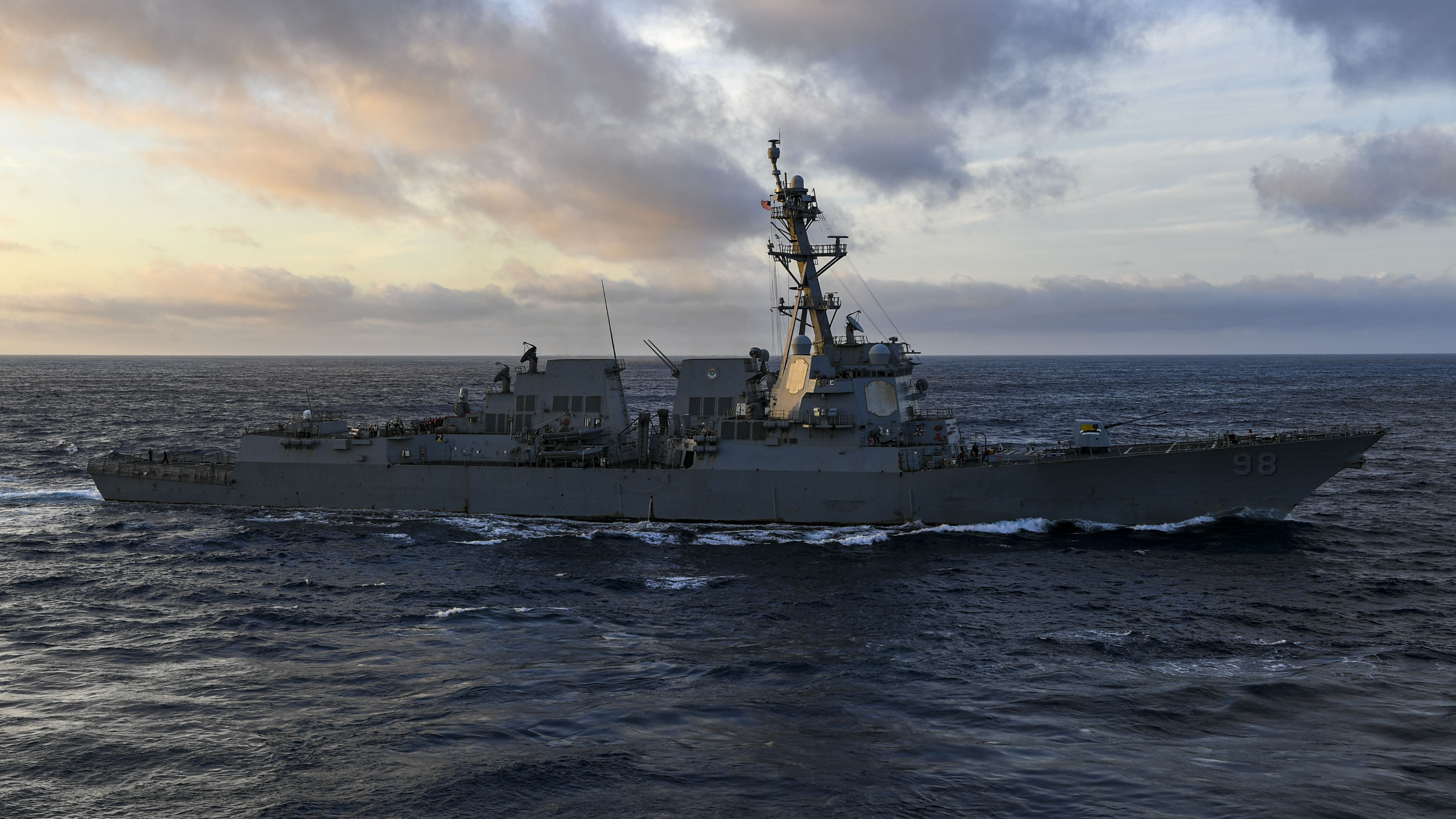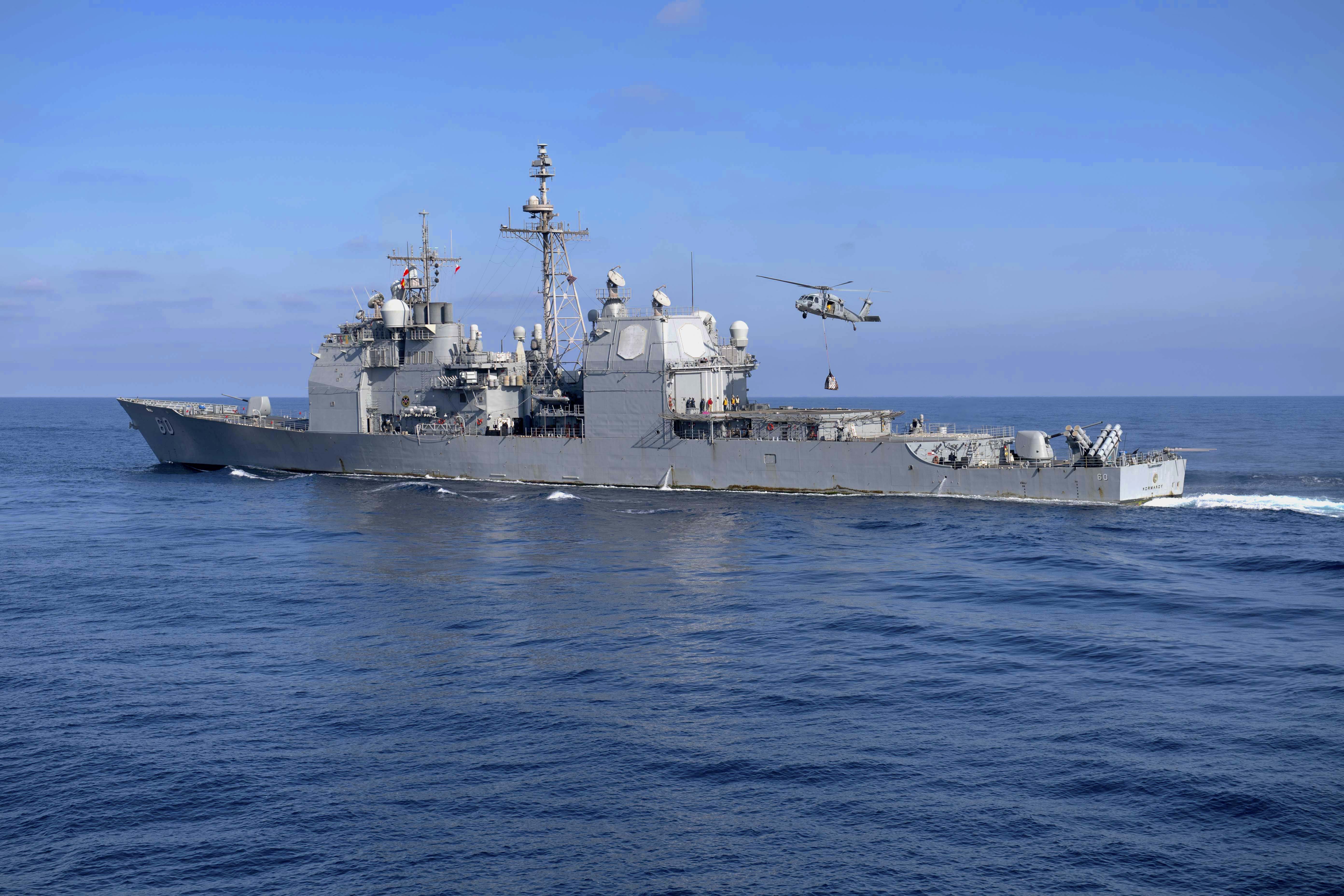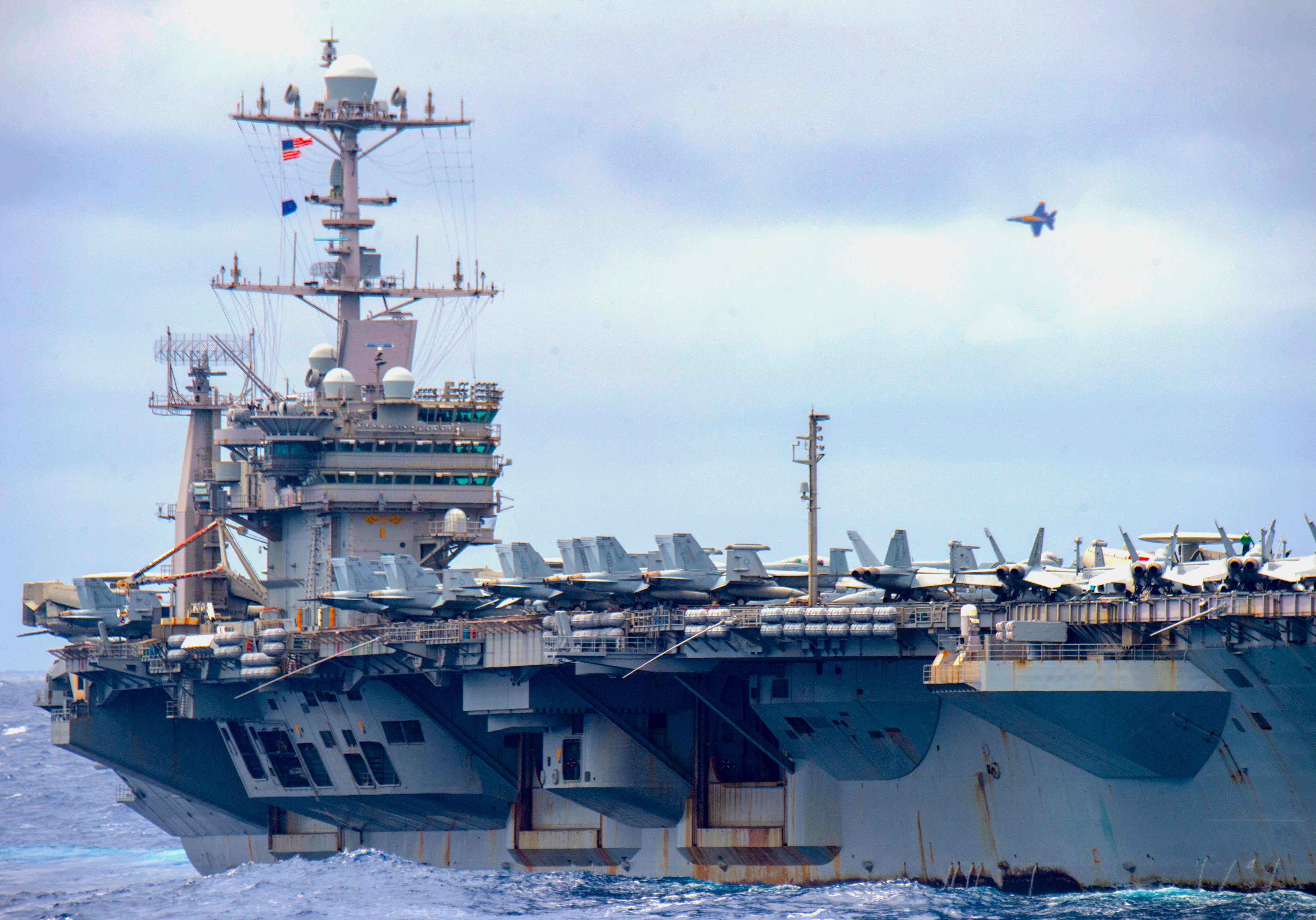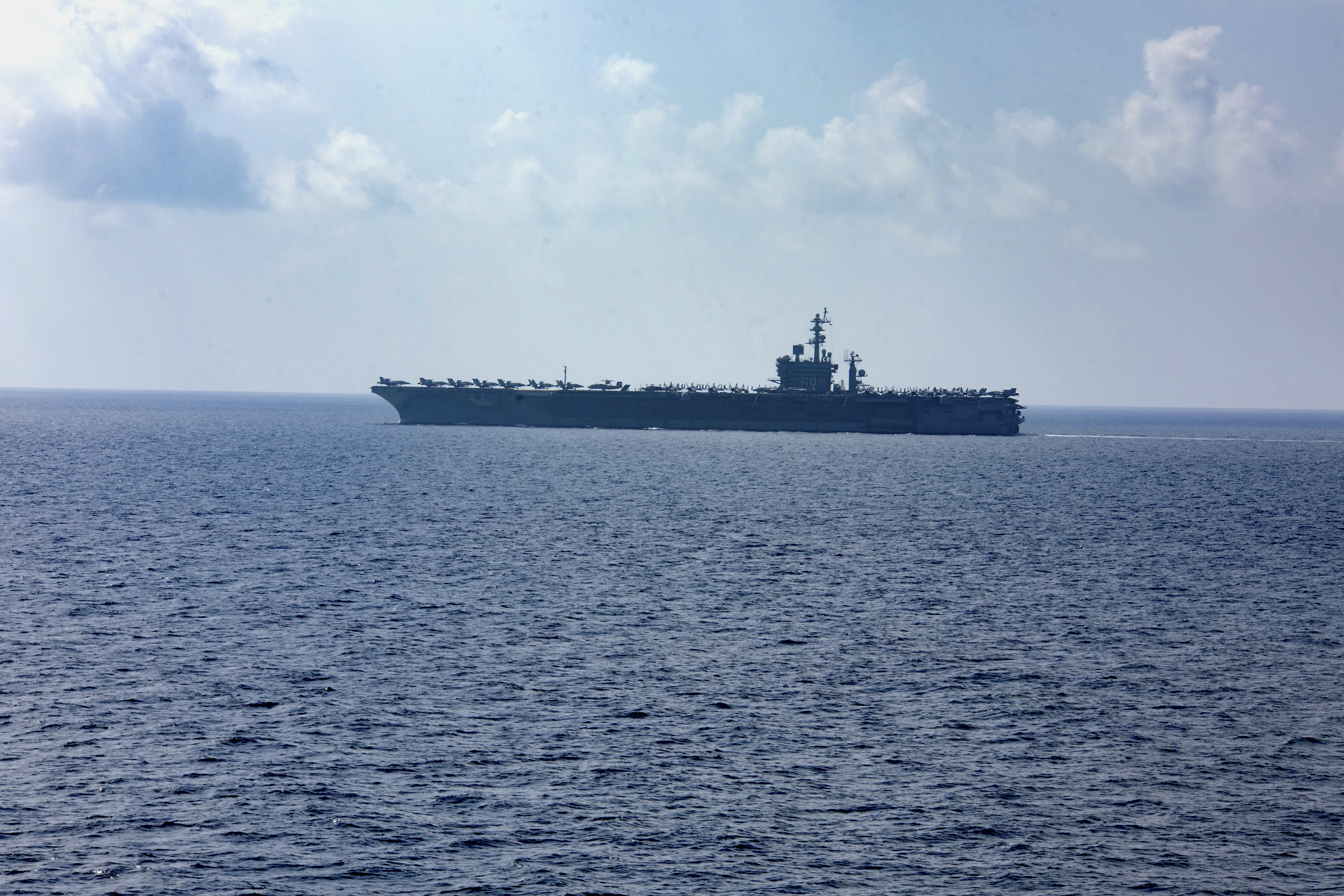
Ships and aircraft assigned to the Harry S. Truman Carrier Strike Group will begin their return today after some sailors spent almost nine months at sea, the commander of U.S. 2nd Fleet told reporters on Friday morning.
Later today, guided-missile cruiser USS Normandy (CG-60) and guided-missile destroyer USS Forrest Sherman (DDG-98) will return to Naval Station Norfolk, Va. Units from Carrier Air Wing 1 will return to Naval Air Station Oceana and Chambers Field in Norfolk, Vice Adm. Andrew Lewis said during the press roundtable.
Normandy, Forrest Sherman and Mayport, Fla.-based destroyers USS Lassen (DDG-82) and USS Farragut (DDG-99) have been underway continuously since Sept. 12 – for a total of 267 days.
Normandy and Forrest Sherman were approaching the naval station as of 10 a.m. EST, according to ship spotters.
USS Harry S. Truman (CVN-75) is set to return in mid-June, Secretary of the Navy Kenneth Braithwaite announced late Thursday after a visit to the carrier.
The carrier escorts departed their homeports to form a quickly assembled surface action group (SAG) while Truman remained at the pier, sidelined with electrical problems that required an unexpected repair period.
The carrier eventually left the pier on Nov. 18 and sped to the Middle East to relieve USS Abraham Lincoln (CVN-72) in late December. Lincoln’s deployment was extended after the carrier entered the operating area in May of 2019 as a hedge against an Iran.
Truman operated in the Arabian Sea and the Gulf of Oman until late March, when it began heading back to Norfolk after being relieved by USS Dwight D. Eisenhower (CVN-69).

While their deployment officially ended in mid-April, Truman, Normandy and Forrest Sherman remained at sea as a reserve force in an effort to protect the crew from a COVID-19 outbreak while carriers on the West Coast and Japan were getting ready to deploy.
“They couldn’t pull into port for a long time because of the environment that we are operating in,” Lewis said.
“When the strike group was coming back here six weeks ago, we had two ready strike groups underway. Now – in addition to the Truman and the Eisenhower Strike Group deployed to the Middle East — we’ve got [USS Nimitz (CVN-68)] certified and preparing to deploy to theater. [USS Theodore Roosevelt (CVN-71)] is back up on deployment, fully operating. And [USS Ronald Reagan (CVN-76)] is preparing to go on patrol. It’s about time that the Truman can be relieved of the watch.”
While it was waiting to come back home, the Truman CSG took part in a combined exercise with NORAD and the U.S. Air Force in the high-end homeland security exercise,
Mayport destroyers Lassen and Farragut are now assigned to U.S. 4th Fleet as part of U.S. Southern Command’s anti-trafficking push announced by the White House in April. The ships are set to drill with Colombian submarines before returning to Florida in mid-June, Lewis said.

Truman has been deployed 16 out of the last 32 months and will now prepare for a long-overdue maintenance period, Lewis said. Ike’s maintenance period tripled in length, upending the East Coast deployment schedule and forcing Truman into a so-called double pump deployment – heading to sea for the second deployment in two years without a planned maintenance period in between.
While the circumstances for both carriers were far from ideal, Lewis said there were some beneficial lessons from the extended deployments and the COVID-19 restrictions.
“One of the things we have found in both the Truman and Eisenhower strike groups is an ability for the ship’s crew and sailors to fix some things that, heretofore, we had not been able to fix,” Lewis said.
“They’ve been fixing casualties at sea at a much higher rate than we’ve seen it in the past.”

For example, one of the four steam catapults on Truman had failed. Rather than wait for the yard period, sailors on Truman fixed it themselves.
“In close coordination with NAVSEA, they took a bunch of pictures and went back and forth with the engineers and got the engineering to do the fix that they did,” Lewis said.
Normandy had a line shaft bearing fail, which required technical representatives to come aboard to assist with the repair. The cruiser developed a procedure to quarantine the tech reps and the sailors to make the repair to keep the rest of the ship safe but also get the work done at sea.
“What we’re finding out is if we give the sailors the resources they need to fix the thing, they have the initiative to do it,” Lewis said.





